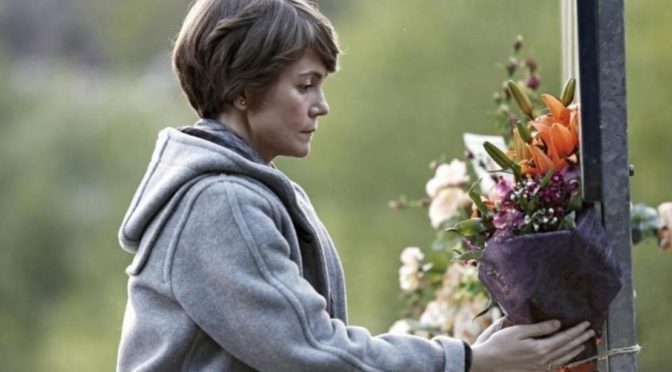 LOREAK means ‘flowers’ in Basque. Unsurprisingly, therefore, flowers play a large role in this film by directors Jon Garaño and Jose Mari Goenaga. Garaño was also co-director of HANDIA, which in 2018 won ten Goya Awards.
LOREAK means ‘flowers’ in Basque. Unsurprisingly, therefore, flowers play a large role in this film by directors Jon Garaño and Jose Mari Goenaga. Garaño was also co-director of HANDIA, which in 2018 won ten Goya Awards.
Released in 2014, LOREAK made history by becoming the first Basque-language film to be selected as the Spanish entry for the Oscars’ Best Foreign Language Film category. It is a moving, understated exploration of grief and love, using flowers as its frame. Flowers, after all, can serve not only as tokens of our affection for loved ones, but also as offerings in remembrance of the dead. This seeming contradiction between flowers as a symbol of life and love and flowers as a symbol of death and grief is a central concern of the film.
The main protagonist is Ane (Nagore Aranburu), a middle-aged woman in a dull, loveless relationship – her boyfriend Ander (Egoitz Lasa) prefers watching the TV to talking with her. Excitement enters Ane’s life when she begins to receive a weekly bouquet of flowers, but she doesn’t know who is sending them. In fact, they are from Beñat (Josean Bengoetxea), a work colleague whom she barely knows. Beñat, too, is in an unhappy relationship, made more complicated by the addition of his mother Tere (Itziar Aizpuru), whom his wife Lourdes (Itziar Ituño) cannot stand. Although Beñat’s affection for Ane feels somewhat contrived, and even a bit creepy at times (he keeps a necklace of hers, for instance, in the crane in which he works), this is forgivable in the context of the film’s wider poignant realism.
“The message seems to be that there is no right or wrong way to mourn, just as there is no right or wrong way to love.”
A death complicates matters, and the remainder of the film explores the different ways that people experience grief. The message seems to be that there is no right or wrong way to mourn, just as there is no right or wrong way to love. Grief is a personal matter, concerning more the griever than the person grieved for. After all, as Beñat remarks to his elderly mother, the dead don’t care about flowers – but this doesn’t stop Tere from leaving flowers on the grave of her husband once a week.
For a film that could be called a romance, or at least a quasi-romance, LOREAK contains few kisses and no lovemaking. Instead, we are presented with an honest, at times uncomfortable, look at death. The body of the deceased is donated to medical research, which is depicted in grisly but brief detail. During the five years in which the corpse is property of the medical school, the relatives of the deceased struggle to move on.
Instead of relying on tropes of good and bad, LOREAK contains a nuanced cast of characters who develop over the course of the film’s five years. Tere seems at first rude and insensitive, but we later see that she also has a sweet, kindly side to her. Lourdes, meanwhile, initially attracts our sympathy but subsequently comes across as cold and unfeeling.
“Instead of relying on tropes of good and bad, LOREAK contains a nuanced cast of characters who develop over the course of the film’s five years.”
Aranburu gives a stand-out performance exempt from all theatrical exaggerations. Ane’s grief, love and confusion are movingly portrayed, with a great deal conveyed in her facial expressions. Unable to talk with her boyfriend about her feelings, she simply curls up into a ball on the bed.
Flowers, like people, die. According to Tere, however, people only really die when they are forgotten. LOREAK explores in an honest and original manner the universal themes of love and death.
LOREAK was screened at the University of Strathclyde as part of Cinemaattic’s Basque Spring Film Festival. You can read more of our coverage here.

